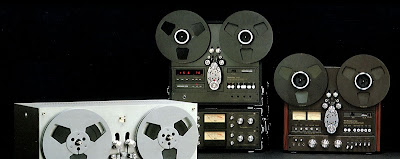The black & white law.
It is difficult for
white folks to “see” racism as something other than personal bias. Seeing and perceiving structural inequalities
is one of the most challenging barriers to white people engaging in a Godly,
biblical justice-seeking. We say “I’m
not a racist” and assume that the problem must be one of “inner city culture”
laziness, etc., to explain other groups’ struggles. We explain that there are good ones and bad
ones in every culture; good ones unconsciously
defined by the ability to get ahead and make nice with white culture. You know how it goes: KKK members are racist but I’m not. I just think people are poor because they are
lazy welfare queens with hypersexual partners.
The Evangelical church, with its emphasis on individual responsibility and a personal Gospel has helped reinforce
the belief that racism is primarily interpersonal and relational. Think, Promise Keepers. (We hugged; we cried. Some of my best friends are black!)
How stunning to see it then, in our laws.
Our church has a little group reading The New Jim Crow, by Michelle Alexander. It hits like a hammer. She spends the first two chapters outlining a brief
history of the racialized policing of black people the sublimation
of this policing as the war on drugs. It
draws out the staggering numerical difference in how black people are policed
and sentenced. We just finished Chapter 3 which raises a powerful question:
“The central question, then, is how exactly does a formally colorblind criminal justice system achieve such racially discriminatory results.” p.103
I can see the problem of the cop on the street: it looks like we are deliberately policing some people more than others based on color & class, but I was
stunned to learn of the systemic legal refusal to acknowledge a problem.
The fourteenth amendment was passed to protect everyone’s right to have full and
equal protection and benefit of all the law.
It guards what the Civil Rights act of 1866 established. But in
1987, the supreme court heard McClesky v. Kemp which argued there is
clearly racial bias in criminal sentencing. Statistics clearly demonstrated that crimes against white folk received far harsher sentences. The
Supreme Court however ruled against it, arguing that to “prove” racial bias exists
under the fourteenth amendment, you
would have to prove intent. Like a
confession. Alexander writes:
...in 1987, when media hysteria regarding black drug crime was at a fever pitch and the evening news was saturated with images of black criminals shackled in courtrooms, the supreme court ruled in McClesky v. Kemp that racial bias in sentencing, even if shown through credible statistical evidence, could not be challenged under the Fourteenth Amendment in the absence of clear evidence of a conscious, discriminatory intent. p.109
This, in effect means that the court only recognizes blatant,
explicit bigotry. When,
Adolph Lyons was stopped by the LAPD for a blown taillight and ordered at gunpoint
out of the car was choked out, he argued that his constitutional rights were
violated in part, because of his race. The court ruled against him, too, saying that :
Lyons would have had to allege that not only would he have another encounter with the police but also to make the incredible assertion either (1) that all police officers in Los Angeles always choke any citizen with whom they have an encounter whether for the purpose of arrest, issueing a citation for questioning, or (2) that the City ordered or authorized the police to act in such manner. p.129 (cited)
Together, these cases create an environment where racial bias does not
exist unless the policeman or the department says out loud “I
don’t like black people and I am doing this because you are black.”
Utterly ridiculous. We have made race legally impossible to see outside of
explicitly stated personal intent.
I find it fascinating (horrifying) that our inability to
see race is reflected in our laws. The
only racism that exists in white society is clearly expressed interpersonal
hostility. What does this mean? How should we understand this? A deep psychoanalysis seems in order. Is there is a deep epistemological problem of whiteness in here, or is it just a natural function of
power? When your world is the norming norm, you can explain everything and narratives that disturb it are outlawed for convenience.
So much so, it seems that even Christians submit to western explanatory power over the Gospel. "We're all God's children" becomes a way to ignore difference instead of a reason to listen to other narratives. And there is a deep way we ignore, systemically, that we are still the ones who put Jesus on the cross; we are the Romans. Our best laws and order still kill the Christ. We believe in our rightness, not our forgiven wrongness. Anyways, it was stunning to be talking about the difficulty whiteness has in seeing structural injustice and then opening the book and seeing it in our laws. There's really no new news here, so in summary and in conclusion, I find these three things at work together somehow; an emphasis on personal interaction, a private salvation, and our societal legal structure; but only God can save.



Comments
Post a Comment
I cherish your comments, but not vileness or wickedness. By vileness I mean Spam, and wickedness I mean hateful speech. Unless it's about spam.